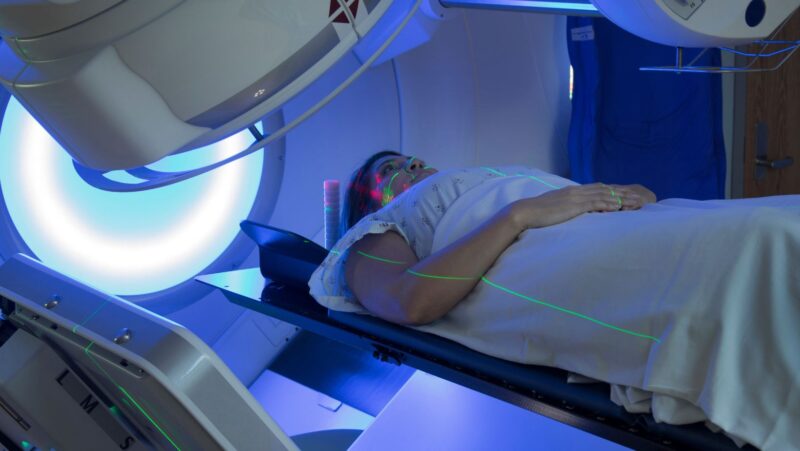
In the realm of modern medicine, the utilization of medical devices has become increasingly prevalent, offering patients hope and health solutions. One such device, the Bard PowerPort, has facilitated intravenous access for patients undergoing various medical treatments.
Despite its intended purpose to enhance patient care, the Bard PowerPort has been scrutinized due to reported complications and lawsuits surrounding its use.
Understanding the Bard PowerPort
The Bard PowerPort, manufactured by C.R. Bard, Inc., is an implantable port used in patients requiring frequent intravenous access. This can be for chemotherapy, blood transfusions, or long-term antibiotic therapy.
For instance, the National Institutes of Health (NIH) states that 5 million Americans need a blood transfusion yearly. Bard PowerPort can be used in such scenarios to transfuse blood conveniently. The device consists of a small reservoir implanted under the skin and connected to a catheter inserted into a large vein.
The primary purpose of the Bard PowerPort is to enable medical professionals to administer medications and fluids directly into the bloodstream. This eliminates the need for repeated needle sticks, reducing patient discomfort and minimizing the risk of complications associated with peripheral intravenous access.
Intended Use and Benefits
A Wiley Online Library study states that over 50% of hospitalized patients get a peripheral intravenous catheter (PIVC). These catheters are inserted to deliver fluids and other medications. However, PIVC insertion can be challenging, even for experienced healthcare personnel, as well. This is where the Bard PowerPort comes into the picture.
The Bard PowerPort can be inserted into the patient and kept there for seamless intravenous access. It offers several advantages over traditional methods of intravenous access, making it an invaluable tool in patient care:
- Convenience: Once implanted, the Bard PowerPort remains in place for an extended period, eliminating the need for frequent needle insertions.
- Reduced discomfort: Patients experience less pain during medical procedures since the port is accessed using a special needle designed explicitly for this purpose.
- Improved quality of life: Patients undergoing long-term treatments benefit from the convenience and comfort of the Bard PowerPort, enhancing their overall quality of life.
For many patients, the Bard PowerPort has proven to be a reliable and efficient means of receiving essential medical treatments. However, despite its intended benefits, the device has been associated with various complications that have led to legal action against its manufacturer.
Complications and Adverse Events
The Bard PowerPort, like any medical device, carries risks of complications that patients and healthcare providers should be aware of. According to Corporate Live Wire, data shows that the complication rate could be 59%.
One common complication associated with the Bard PowerPort catheter is infection. Since it involves the placement of a foreign object into the body, bacteria are likely to enter the bloodstream and cause infection. This risk is higher during the initial implantation procedure but can also occur later during catheter use.
Thrombosis, or the formation of blood clots within the catheter or surrounding veins, is another concern with PowerPort catheters. Blood clots can obstruct blood flow, leading to pain, swelling, and potentially more severe complications. For instance, if the clot dislodges and travels to the lungs, it can lead to pulmonary embolism.
Catheter migration is a rare but possible complication of PowerPort catheters. Migration occurs when the catheter tip moves from its intended position within the central venous system. This can result in improper catheter function or damage to surrounding structures.

According to TorHoerman Law, mechanical complications such as catheter fracture or disconnection may occur. This can happen due to external trauma, repeated manipulation of the catheter, or manufacturing defects. Fractured or disconnected catheters may require surgical intervention for removal or repair.
These complications can result in additional medical procedures, prolonged hospital stays, and, in some cases, permanent injury or death. As a result, patients who have experienced adverse events related to the Bard PowerPort have sought legal recourse to seek compensation. The Bard Power Port lawsuit settlement amount can vary from $10,000 to over $100,000.
Lawsuits and Legal Action
In recent years, Bard PowerPort cases have led to numerous lawsuits and legal action across various jurisdictions. Numerous lawsuits have been filed against Bard, the manufacturer of PowerPort devices. The lawsuits allege various issues such as device migration, puncturing of veins and arteries, infections, and even death.
Plaintiffs argue that Bard failed to adequately warn patients and medical professionals about the potential risks and complications associated with PowerPort implants.
These lawsuits typically claim negligence, defective design, failure to warn, and breach of warranty, among other legal theories. Plaintiffs seek compensation for medical expenses, pain and suffering, lost wages, and other damages resulting from the alleged injuries.
As stated in an article from law.com, lawyers say that Bard’s PowerPort devices may generate up to 10,000 lawsuits. Concerns have arisen regarding its safety and potential risks associated with its use.
In response to the lawsuits, Bard has defended its product, asserting that the devices are safe and effective when used as intended. The company has argued that any complications experienced by patients are rare and can occur with any medical device.
The legal battles surrounding Bard PowerPort cases have garnered significant attention from the medical community, regulatory agencies, and the public. The outcome of these lawsuits could have implications for the regulation of medical devices, patient safety standards, and the liability of manufacturers.
Regulatory Oversight and Patient Safety
The controversy surrounding the Bard PowerPort highlights the need for robust regulatory oversight and comprehensive post-market surveillance of medical devices. Regulatory agencies play a crucial role in evaluating the safety and effectiveness of medical devices before they enter the market.
In response to reports of adverse events associated with the Bard PowerPort, the FDA issued safety communications. The label requirements are updated and collaborated with healthcare providers to enhance patient safety. These efforts aim to identify and mitigate potential risks associated with medical devices and ensure that patients receive the highest standard of care.
In conclusion, the Bard PowerPort serves as a testament to the advancements in medical technology and its potential benefits to patients. However, the device’s association with complications and legal challenges underscores the importance of diligent oversight and transparency in the healthcare industry.
The Bard PowerPort continues to be used in clinical practice. However, healthcare providers must remain vigilant in monitoring patients for signs of complications and providing timely intervention when necessary. Additionally, manufacturers are responsible for prioritizing patient safety and ensuring that their products undergo rigorous testing and evaluation before reaching the market.













